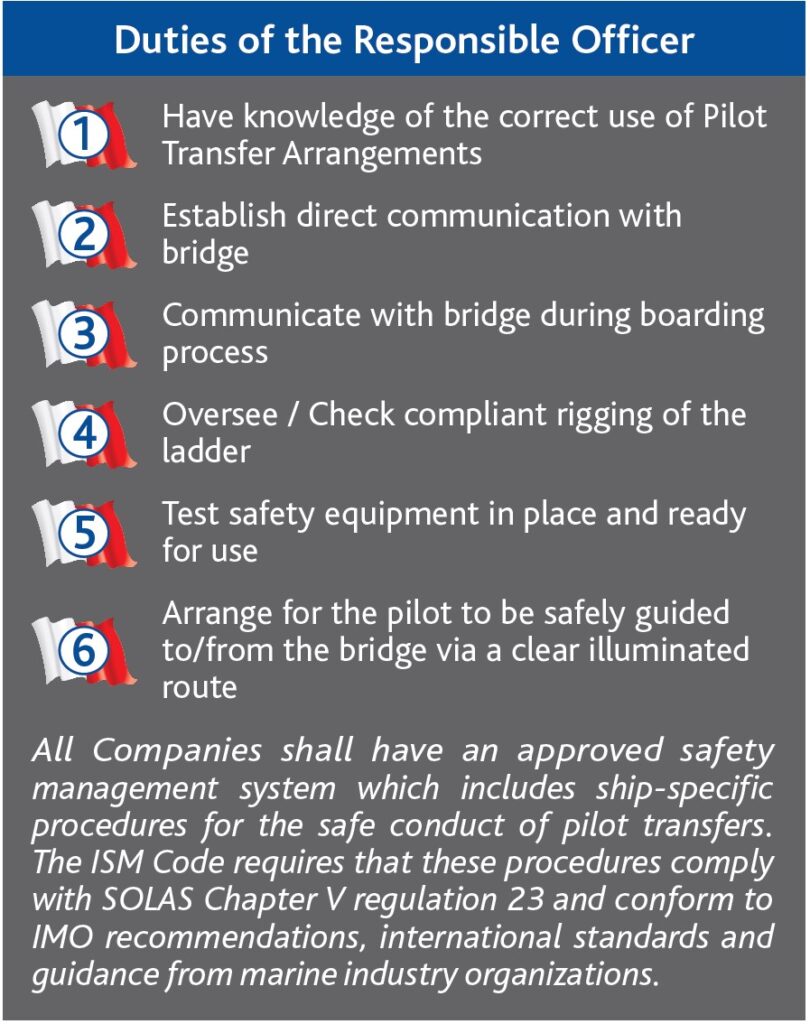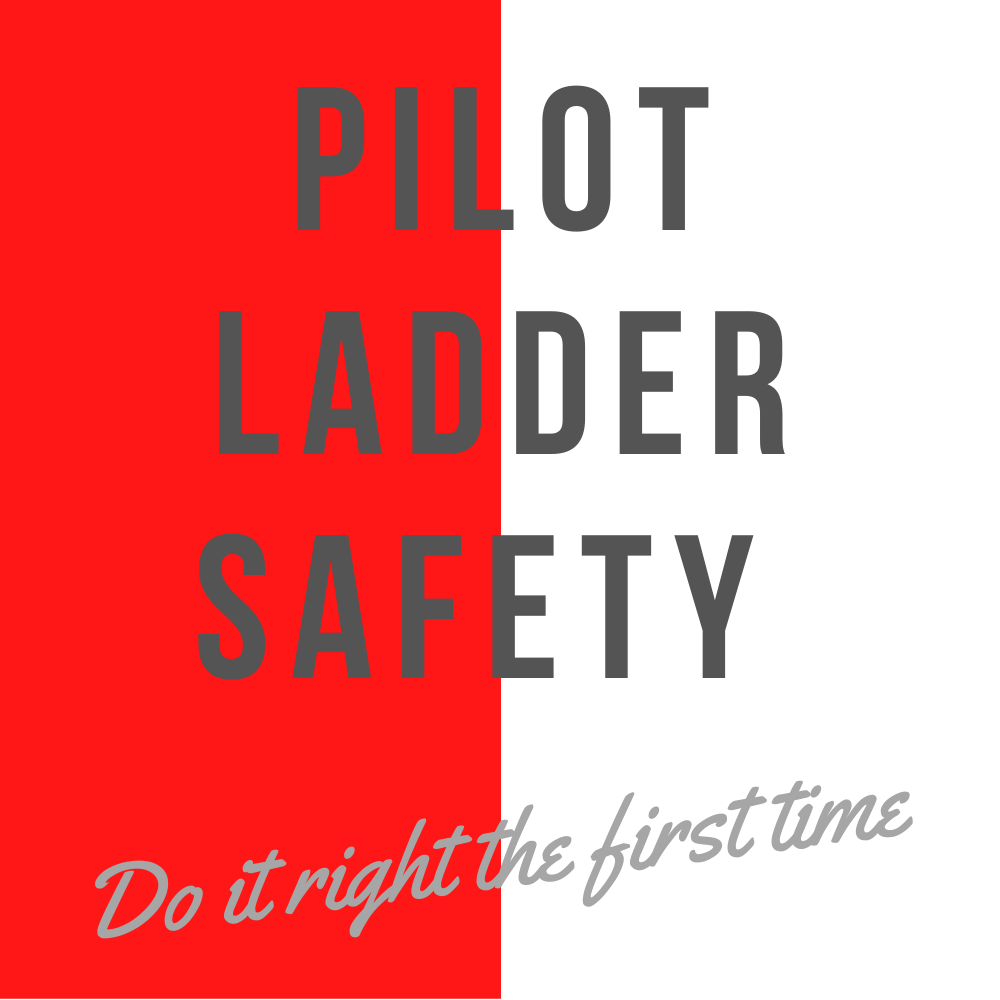1 Purpose
1.1 These performance standards provide for requirements for the design, manufacture, construction, rigging, installation of pilot ladder winch reels, operational readiness, onboard inspection and maintenance, familiarization and approval in relation to pilot transfer arrangements required under regulation V/23 of the 1974 SOLAS Convention, adopted by resolution MSC.[…].
These performance standards define the requirements for every aspect of pilot transfer arrangements as required under SOLAS Regulation V/23. They apply to the:
- Design, manufacture, and construction of the equipment
- Rigging and installation procedures
- Operational readiness of the arrangement
- Inspection and maintenance routines on board
- Familiarization of the crew with safe practices
- Approval process by the maritime administration
The purpose of these standards is to ensure that pilot transfer arrangements are safe, consistent, and reliable worldwide, regardless of ship type or operating conditions.
They serve as the technical and operational foundation behind the legal requirements of Regulation V/23, and are adopted through a formal IMO resolution (MSC.[…]) to ensure global enforcement and alignment.
2 Definitions
For the purpose of these performance standards, the following definitions apply:
2.1 Pilot transfer arrangements refer to all equipment and arrangements used solely for the embarkation and disembarkation of pilots and other personnel, including pilot ladders, accommodation ladders, embarkation platforms, manropes, pilot ladder winch reels, securing arrangements and other associated equipment.
Pilot transfer arrangements: This term refers to all equipment and arrangements used solely for the embarkation and disembarkation of pilots and other personnel. It includes: Pilot ladders, Accommodation ladders, Embarkation platforms, Manropes, Pilot ladder winch reels, Securing arrangements and any other associated equipment. These arrangements must be designed and used exclusively for safe personnel transfers between ship and shore or between vessels.
2.2 Point of access means the location at which pilots or other personnel transfer between a pilot ladder or accommodation ladder and the deck or side opening of a ship.
Point of access: The point of access is the specific location where a person transfers between the pilot ladder or accommodation ladder and the ship itself—typically onto the deck or through a side opening.
2.3 Manropes means ropes hung on either side of a pilot ladder for assistance in ascending and descending.
2.4 Trapdoor means an aperture with a cover located in a platform allowing the pilot ladder, manropes to pass through without obstruction or distortion and used by pilots or other personnel to transfer between the pilot ladder and the accommodation ladder.
2.5 Securing a pilot ladder at intermediate length means securing a pilot ladder at a point other than the thimble ends.
Securing a pilot ladder at intermediate length: This refers to the practice of securing the pilot ladder at a point other than its thimble ends—typically used when the full length of the ladder is not needed. This must be done using a method approved by the manufacturer or as specified in the standards.
3 General
3.1 Pilot transfer arrangements shall be designed, installed, inspected, maintained, and rigged to enable pilots and other personnel to embark and disembark safely in all seagoing conditions of draught and trim.
This means the arrangement must function properly:
- Whether the ship is fully loaded or in ballast
- Regardless of trim (bow or stern heavy)
- Under typical sea-going conditions, not just at berth
Safety is the primary objective. Equipment and procedures must support this at every stage of a vessel’s operation.
3.2 The height of climb on a pilot ladder shall not be less than 1.5 m and not more than 9 m from the surface of the water to the point of access in all seagoing conditions of draught and trim. Whenever the height of climb on a pilot ladder from the surface of the water to the point of access exceeds 9 m, the ship shall be provided with and rig an accommodation ladder in conjunction with the pilot ladder (i.e. a combination arrangement).
The height a person must climb on a pilot ladder — from the surface of the water to the point of access on the ship — must always be at least 1.5 metres, and no more than 9 metres
If the height exceeds 9 metres in any condition of draught or trim, the vessel must provide a combination arrangement. This includes a pilot ladder, together with an accommodation ladder
This ensures that the climb is never dangerously long and that the transfer remains safe, even at high freeboards.
3.3 Where the height of climb is less than 1.5 m from the surface of the water and a pilot ladder is not used as part of a pilot transfer arrangement, this does not relieve any vessel or anyone involved with the transfer to ensure that the transfer is completed safely, is adequately risk assessed and that any equipment, other than a pilot ladder, which may be used shall be done so in accordance with these performance standards.
A lot of PTA accidents happen on low freeboard ships with short ladders!
In cases where the height from the water to the ship is less than 1.5 metres, a pilot ladder may not be used. However, this does not remove the obligation to ensure the transfer is completed safely, properly risk assessed and is carried out using equipment and methods that still meet the general safety principles in the performance standards
Even at low freeboards, the same level of caution, preparation, and responsibility applies to everyone involved in the transfer.
3.4 Pilot transfer arrangements shall be provided to enable pilots and other personnel to embark and disembark safely on either side of the ship. Necessary equipment shall be carried on each side unless the equipment is capable of being transferred for use on either side.
Pilot transfer arrangements must be provided in such a way that pilots and other personnel can embark and disembark safely from either side of the ship.
This means equipment must be available port and starboard or, if the equipment is movable, it must be quickly and safely transferable from one side to the other.
This ensures flexibility depending on pilot boarding conditions, sea state, or port requirements.
3.5 All pilot ladders and manropes used for the transfer of pilots and other personnel shall be clearly identified with permanent marking so as to enable identification of each appliance for the purposes of survey, inspection and record-keeping.
All pilot ladders and manropes used for transfer must be clearly and permanently marked to allow easy identification. This is essential for: inspection and survey purposes, maintenance tracking and ensuring only compliant and certified equipment is in use. Markings must be durable and remain legible over time.
Do not use PTA’s for other purposes than personnel transfer.
3.6 Reference in these performance standards to an accommodation ladders includes a sloping ladder used as part of the pilot transfer arrangements.
This clarification ensures that any ladder, regardless of its exact type, is treated according to the same safety requirements when used for pilot transfer purposes.
3.7 The onboard inspection and rigging of the pilot transfer arrangements and the embarkation and disembarkation of pilots and other personnel shall be supervised by a designated responsible officer. During the transfer of pilots or other personnel, the responsible officer shall have means of communication with the navigation bridge and shall arrange for the escort of the pilot by a safe route to and from the navigation bridge and other personnel to an appropriate safe location.
The process of rigging the pilot transfer arrangement, as well as the embarkation and disembarkation of pilots and other personnel, must be: supervised by a designated responsible officer, supported by direct communication between this officer and the navigation bridge an followed by an escort to and from the bridge, or to a designated safe area on the vessel
This ensures that all transfers are monitored, coordinated, and carried out under full control, minimizing the risk of accidents during the most vulnerable phase of boarding.
On the new wheelhouse poster the duties of the responsible officer are outlined as follows:

Note the paragraph on the required management system and ship-specific procedures for the safe conduct of pilot transfers. In this respect, refence is also mad to the ISM-code.
Next: Performance Standards for PTA’s Part A: – Design, Manufacture and Construction
